Showing 251–260 of 270 results
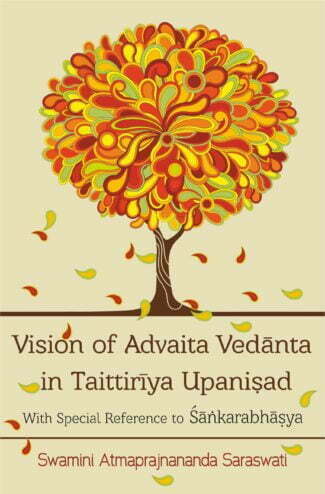
This book unveils the vision of Advaita Vedanta in Taittiriya Upanishad with special reference to Shankarabhashya in a unique style, detailing the importance of shabda-pramana, along with free translations of three vallis of the Upanishad. It presents the oneness of triangular phenomenon called jiva, jagat and Ishvara from the Advaita Vedanta perspective.
This book unveils the vision of Advaita Vedanta in Taittiriya Upanishad with special reference to Shankarabhashya in a unique style. Upanishads are shabda-pramana, and this work adequately details the six pramanas, which hold the key to understand the significance of shabda-pramana, along with the five shanti-mantras in Taittiriya Upanishad. As the crux, it analyses Shankaras commentary Taittiriya-Bhashyam on Taittiriya Upanishad, enabling one to understand the deep layers of Advaita Vedanta in detail.
The core theme Vision of Advaita in Taittiriya Upanishad discusses the oneness of the triangular phenomenon called jiva, jagat and Ishvara. It delves deep into the method of deciphering the mahavakyas as well. While following closely the source literature, this volume attempts to detail the nuances of Taittiriya-Bhashyam. The approach of navigating the reader to the principal theme of Advaita Vedanta is expected to give him/her a good background. In ensuring this the volume provides relevant citations and informative explanatory notes. More importantly, it across three vallis Shikshavalli, Brahmanandavalli and Bhriguvalli provides free translations of Taittiriya Upanishad.
This elaborate and scholarly book is expected to add great value to students who wish to have a better understanding of the great Indian tradition called Advaita Vedanta.
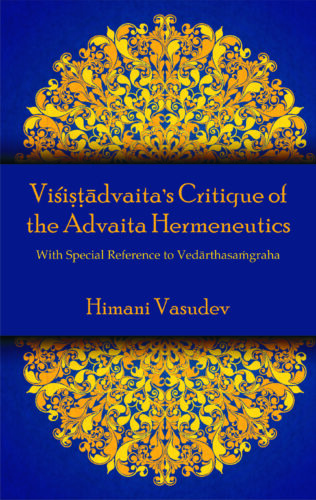
Vedānta is the very heart of Indian philosophy. The various schools of Vedānta have been explored under diverse categories including ontological and epistemological, but they are a storehouse of so much more. “Hermeneutics” in simple words can be the theory of interpretation and this book has studied the critique of the Advaita hermeneutics by Rāmānujācārya based on Vedic statements like tat tvam asi, tadaikāta bahu syāma, neha nānāsti kiñcana and many others in his book Vedārthasaṁgraha which mirrors a complete vision of the Upaniṣads. Rāmānujācārya has shown how the Śruti statements can be seen in a coherent manner resolving the conflicts of bheda and abheda. The nature of a word and its various śaktis, followed by how successful are words in describing the concepts of sat, cit and ānanda, are also discussed here.
This book is an initial effort in the hermeneutic studies of Indian texts, which have been kept limited to the scope of philosophy, theology or religion alone. Many more linguistic treasures can be found here.
Vedānta is the very heart of Indian philosophy. The various schools of Vedānta have been explored under diverse categories including ontological and epistemological, but they are a storehouse of so much more. “Hermeneutics” in simple words can be the theory of interpretation and this book has studied the critique of the Advaita hermeneutics by Rāmānujācārya based on Vedic statements like tat tvam asi, tadaikāta bahu syāma, neha nānāsti kiñcana and many others in his book Vedārthasaṁgraha which mirrors a complete vision of the Upaniṣads. Rāmānujācārya has shown how the Śruti statements can be seen in a coherent manner resolving the conflicts of bheda and abheda. The nature of a word and its various śaktis, followed by how successful are words in describing the concepts of sat, cit and ānanda, are also discussed here.
This book is an initial effort in the hermeneutic studies of Indian texts, which have been kept limited to the scope of philosophy, theology or religion alone. Many more linguistic treasures can be found here.
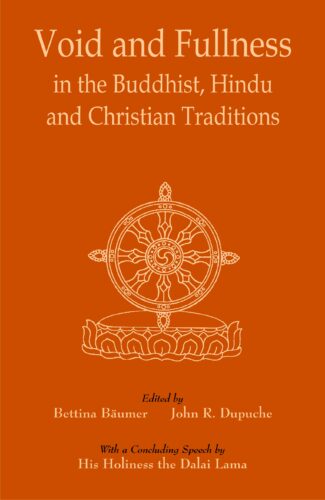
Interreligious dialogue is one of the important ways for overcoming cultural and religious differences and misunderstandings. But it has to reach the depths of the spiritual, philosophical and theological insights of the religious traditions. This volume throws light on concepts of Void (sunya) and Fullness (purna, in Greek pleroma) in the Buddhist, Hindu and Christian traditions.
Interreligious dialogue is one of the important ways for overcoming cultural and religious differences and misunderstandings, and for contributing to world peace. But such a dialogue has to go beyond the social, institutional and purely academic areas: it has to reach the very depths of the spiritual, philosophical and theological insights of the religious traditions. In Buddhism, Hinduism and Christianity such insights are expressed in the apparently opposite, but in reality complementary concepts of Void (shunya) and Fullness (purna, in Greek pleroma). These concepts lead to the respective spiritual experiences and their interpretations in scriptures and philosophies. This volume contains the papers presented at an interreligious seminar at Sarnath, Varanasi, organised by the Abhishiktananda Society, and inspired by the ideas and life of Swami Abhishiktananda (1910-1973). These papers throw light on these fundamental concepts from the different traditions, and are an invitation to dialogue. H.H. the Dalai Lama gave the concluding speech on the importance of interreligious dialogue.
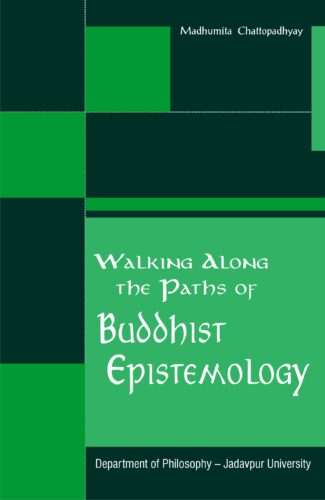
This is a book on Buddhist epistemology dealing with different epistemological topics like the nature of knowledge, validity of knowledge, knowledge of knowledge, perception, erroneous perception, among others. The author has referred to different Sanskrit texts and literature available on these topics.
The monograph highlights the philosophical arguments offered by Buddhist thinkers on different aspects of knowledge. Various aspects of Buddhist epistemology right from the basic question of what the Buddhists mean by knowledge, the varieties of knowledge according to their belief and their explanations of the validity of knowledge are examined. A painstaking work of Prof. Madhumita Chattopadhyay, this study deals with different epistemological topics like the nature of knowledge, validity of knowledge, knowledge of knowledge, perception, erroneous perception, inference and its related issues like ascertainment of vyapti, antarvyapti, prasanganuman and fallacies of inference. The author has referred to many primary sources which include different Sanskrit texts as well as the latest secondary literature available on these topics and discusses the important role of concept of absence and the theory of apoha or negative nominalism as a substitute for universals in Buddhist metaphysics. An attempt is made to explore whether solutions to modern epistemo-logical problems as found in the Western tradition can be provided from the Buddhist perspective in order to show that Buddhist epistemology has a relevant role to play in the area of epistemology itself. The book would interest scholars and students interested in the epistemological and logical aspects of Buddhist philosophy.
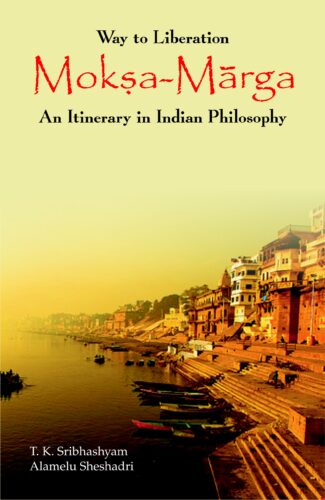
The book projects light on concept of contemplation and meditation, including meditation techniques and practices, which is central to the attainment of moksha. It also explains meaning of love, devotion, religion, the body-soul relation and the three yogas understanding of which is essential to attain moksha.
The way to liberation or moksha needs perfect knowledge, perfect action and perfect surrender to the Lord. The bhakta becomes a bhagavata as he not only knows and sees but also lives as a servant of God. Moksha is the final approach to the purity and perfection of the human soul. This volume attempts an in-depth study of the concept of liberation or moksha and the way to attain it.
The book begins with the meaning of love, devotion, religion, the body-soul relation and the three yogas, an understanding of which is essential to understand the concept of moksha. In this context, it delves into the meaning of the Brahman, the Absolute, as conveyed in the Vedas and other religious works like the Upanishads and the Bhagavad-Gita, the concept of the universal spiritual entity of Sarveshvara, concepts of sin and virtue, and even the principles of monotheism and polytheism in Hinduism. Quoting from the scriptures and other relevant texts, it emphasises on the notion of devotion and its benefits to examine the means to self-realisation and liberation and includes a study of the concept of contemplation and meditation, including meditation techniques and practices, which is central to the attainment of moksha.
With interesting illustrations, the volume will be useful to religious scholars and students and seekers on the path of spiritual fulfilment.

The book projects light on concept of contemplation and meditation, including meditation techniques and practices, which is central to the attainment of moksha. It also explains meaning of love, devotion, religion, the body-soul relation and the three yogas understanding of which is essential to attain moksha.
The way to liberation or moksha needs perfect knowledge, perfect action and perfect surrender to the Lord. The bhakta becomes a bhagavata as he not only knows and sees but also lives as a servant of God. Moksha is the final approach to the purity and perfection of the human soul. This volume attempts an in-depth study of the concept of liberation or moksha and the way to attain it.
The book begins with the meaning of love, devotion, religion, the body-soul relation and the three yogas, an understanding of which is essential to understand the concept of moksha. In this context, it delves into the meaning of the Brahman, the Absolute, as conveyed in the Vedas and other religious works like the Upanishads and the Bhagavad-Gita, the concept of the universal spiritual entity of Sarveshvara, concepts of sin and virtue, and even the principles of monotheism and polytheism in Hinduism. Quoting from the scriptures and other relevant texts, it emphasises on the notion of devotion and its benefits to examine the means to self-realisation and liberation and includes a study of the concept of contemplation and meditation, including meditation techniques and practices, which is central to the attainment of moksha.
With interesting illustrations, the volume will be useful to religious scholars and students and seekers on the path of spiritual fulfilment.
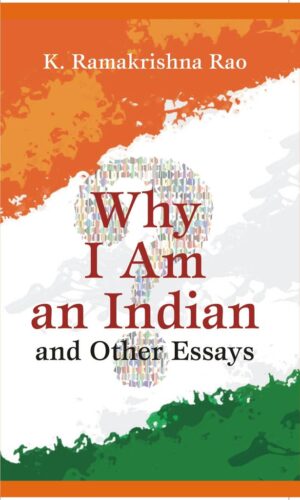
This volume reflects the evolution and growth of Prof. K. Ramakrishna Raos thought and the different dimensions and shades of his academic pursuits, ranging from Gandhis thought to consciousness studies, educational issues, identity problems, parapsychology, and Indian psychology in general and yoga in particular.
This volume reflects the evolution and growth of Prof. K. Ramakrishna Raos thought and the different dimensions and shades of his academic pursuits, ranging from Gandhis thought to consciousness studies, educational issues, identity problems, parapsychology, and Indian psychology in general and yoga in particular.
While the topics covered appear to be very diverse and quite divergent, there is a common thread knitting them together; the thread is that the material covered is concerned with human nature. The crucial aspect of each of us is identity, which bestows on us individuality and separateness. It has its advantages and entails some problems as well. This book reflects on them from different perspectives, focusing mainly on the philosophical and psychological aspects in human functioning, and ones identity and unity with others.
Man is conceived as a composite of body, mind and consciousness. The discussion of these concepts hopefully sheds light directly or indirectly on the multiple problems concerning human nature and the associated difficulties in chasing them in real life and especially in ones academic pursuits.
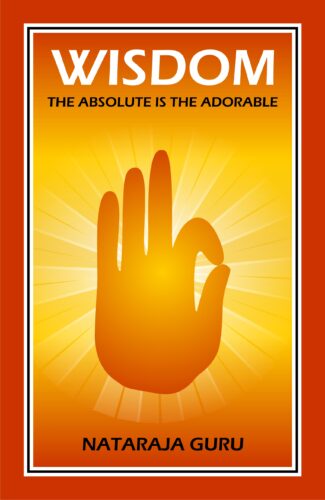
This innovative elucidation charts out the structural map of wisdom the finalised knowledge concerning life in its generic and specific aspects. It encompasses the entire range of human wisdom including epistemology, axiology, politics and mysticism.
This strikingly innovative elucidation charts out the structural map of wisdom the finalised knowledge concerning life, both in its generic and specific aspects. Nataraja Guru, the eminent contemporary thinker, handles the theme as well as the methodology in a very original way. Thematically it encom-passes the entire range of human wisdom, including epistemology, axiology, mathematics, sociology, politics and mysticism. The author presents a scheme of coherent pattern in which all distinctions between contemplative and active, functional and theoretical, contingent and necessary, Eastern and Western dissolve into the unity of the Absolute Truth. The subject-matter and object-matter of wisdom when put in proper perspective around the normative notion of the Absolute, culminate in the idea of common human happiness. In the age of excessive specialization and compart-mentalization, Nataraja Gurus handling of the subject matter is a unique response to the legitimate cry for unification and integration. The methodology adopted throughout this interpretation is unitively taking care of the vertical progress of human wisdom along with the horizontal process of adjustment with the incidental necessities that are demanded by the process. Nataraja Gurus insightful combination of the spiritual with the modem science stands out as a tall land-mark in the field of contemporary wisdom and scholar-ship. It is a powerful beacon to the solace-seeking mankind that is being tortured by the outrageously materialistic society.

The philosophy of Wittgenstein and the Advaita Vedanta philosophy are two philosophical traditions far apart in time and cultural space yet they possess striking similarities. This volume painstakingly researches Wittgenstein’s works and the basic texts of Vedanta, the Upanishads, the Brahmasutra and the Bhagavad-Gita, delving deep into their similarities.
The philosophy of Wittgenstein and the Advaita Vedanta philosophy are two philosophical traditions far apart in time and cultural space yet they possess striking similarities. This painstaking research carried out with a rare thoroughness by an erudite scholar, Ravindra K. S. Choudhary, shows that there are illumi-nating parallels between them even while recognizing their legitimate differences. The work argues that though Advaita Vedanta did not exert a direct influence over Wittgenstein, the philosopher owes much to Schopenhauer who was a great admirer of the Upanishads. Examining a variety of Wittgenstein’s works earlier as well as later and the basic texts of Vedanta, the Upanishads, the Brahmasutra and the Bhagavad-Gita, along with Shankara’s interpretations of them, it delves into their similarities vis a vis the question of reality, the realm of value and some central issues of ethics and religion. It observes that, for instance, Wittgenstein’s notion of the mystical (das Mystische) is similar to the Advaitic view of Brahman. For both, the matters of value have a higher or transcendental level as distinct from the world of facts. Wittgenstein’s idea of a good or happy life is very close to the Vedantic ideals of jivanmukti as well. The work goes on to show that the Vedantic parallels of Wittgenstein’s philosophy persists in distinctive ways from the Tractatus to his last writings. The volume reveals a fresh approach in the field of comparative philosophy. The volume will benefit all those concerned with the discipline of philosophy, Indian or Western.
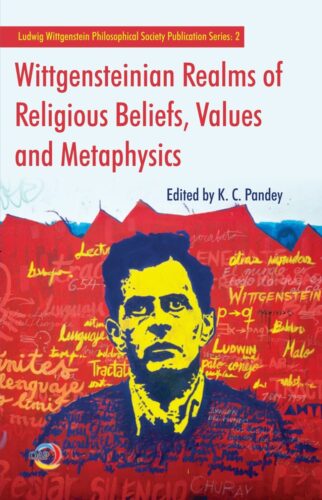
All that cannot be expressed in language, for early Wittgenstein, belong to the realm of Unsayable or Showable. Such a realm consists of religious beliefs, ethical values, aesthetics, metaphysics, solipsism, love, death among other aspects of life which language is incapable of depicting successfully. Later Wittgenstein did not insist on the inexpressibility of these realms as each of them has their own distinct form of life. In this background this anthology is an attempt to explore various facets of these aspects of Wittgensteinian philosophy through various elucidations and interpretations. It is classified into three sections, viz. “Religious Beliefs, Wittgensteinian Fideism, Religious Pluralism, and Cultural Debates”, “Absolute Value, Ethics, Aesthetics, Architecture” and “Subjectivism, Solipsism, Metaphysics, and Hermeneutics”. It aims at bringing out the current development in the field as found in the debates and discussions on Wittgensteinian philosophy in the contemporary philosophical world.
All that cannot be expressed in language, for early Wittgenstein, belong to the realm of Unsayable or Showable. Such a realm consists of religious beliefs, ethical values, aesthetics, metaphysics, solipsism, love, death among other aspects of life which language is incapable of depicting successfully. Later Wittgenstein did not insist on the inexpressibility of these realms as each of them has their own distinct form of life. In this background this anthology is an attempt to explore various facets of these aspects of Wittgensteinian philosophy through various elucidations and interpretations. It is classified into three sections, viz. “Religious Beliefs, Wittgensteinian Fideism, Religious Pluralism, and Cultural Debates”, “Absolute Value, Ethics, Aesthetics, Architecture” and “Subjectivism, Solipsism, Metaphysics, and Hermeneutics”. It aims at bringing out the current development in the field as found in the debates and discussions on Wittgensteinian philosophy in the contemporary philosophical world.
| There are no products |